What are agricultural cooperatives?

A 2002 USDA report entitled "Agricultural Cooperatives in the 20th Century" described agricultural cooperatives in the following glowing terms:
Cooperatives are user-driven businesses that have contributed greatly to the development of one of the world's most productive and scientific-based agricultural systems. They have played an important role in strengthening market access and competitive returns for independent farmers during the 20th century... Cooperatives have also played an important role in rural communities, where they are an integral part of the social fabric. They encourage democratic decision making processes, leadership development and education.In Puget Sound Plywood, Inc. v. Commissioner, 44 T.C. 305, 306 (1965), the tax court articulated the standard legal definition of cooperatives:
Cooperative[s] [are] organization[s] established by individuals to provide themselves with goods and services or to produce and dispose of the products of their labor. The means of production and distribution are those owned in common and the earnings revert to the members, not on the basis of their investment in the enterprise but in proportion to their patronage or personal participation in it.Cooperatives are businesses that are operated consistently with the following principles:
- Subordination of capital -- In businesses organized as corporations, persons who invest money (i.e., capital) in the business receive profits from the corporation and control the corporation. At least in theory, investors (i.e., shareholders) control corporations. Investors vote annually for directors, and these directors oversee the corporation to ensure that the corporation is manages in the best interest of investors. In contrast, in businesses organized as cooperatives, the amount of money a person invests in the business determines neither the person's profits nor the person's control.
- Democratic control by farmer members -- Each member of an agricultural cooperative has an equal voice in the control of the cooperative. Each has an equal voice in determining how the cooperative is managed.
- Not for-profit -- Cooperatives are run for the benefit of farmer members and do not earn profits. Any income received by agricultural cooperatives in excess of costs is paid to farmer members, in proportion to the amount of business that each farmer member does with the cooperatives.
There are a variety of types of agricultural cooperatives. Supply cooperatives are businesses that sell inputs (e.g., seed, fertilizer, etc.) to farmers. Marketing cooperatives are businesses that provide processing or packing services for farmers (e.g., produce milk, cheese, yogurt and other dairy products for dairy farmers). Marketing cooperatives can also advertise farmers' products and engage in collective bargaining on behalf of a group of farmers. There has been a trend of agricultural cooperatives merging and forming increasingly larger cooperatives that provide a variety of services for members (e.g., Cenex-Land O'Lakes, Dairy Farmers of America, and Farmers Cooperative Company).
Farmers decide to join agricultural cooperatives for several reasons. First, by joining agricultural cooperatives, farmers may be able to increase their profits. Without agricultural cooperatives, farmers have very little market power and receive only a small fraction of each dollar that consumers spend on food. With agricultural cooperatives, farmers can, in theory, acquire greater market power and receive a greater fraction of each dollar that consumers spend on food.
Second, by joining agricultural cooperatives, farmers can avoid dealing with for-profit input providers, packers, and processors. For-profit input providers, packers, and processors have substantially greater bargaining power than farmers and can often dictate the terms under which they will sell to or buy from farmers. Farmers will be more likely to receive fair terms when dealing with agricultural cooperatives than when dealing with for-profit corporations.
Third, by joining agricultural cooperatives, independent farmers ensure that they have willing buyers and sellers to do business with. Independent farmers often have a difficult time finding willing buyers and sellers with whom to conduct business. Willing buyers and sellers for independent producers are in short supply both because input providers, packers, and processors have been merging and because input providers, packers, and processors have been conducting an increasing proportion of their business with contract farmers.



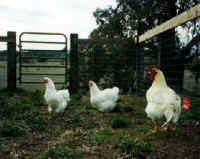




 I suspect that there is, as usual, a
I suspect that there is, as usual, a 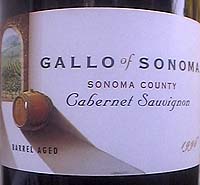 If organic production, integrated pest management, and free-range techniques are worth pursuing because they advance environmental goals or enhance consumer welfare, then the law has a meaningful role to play in ensuring the veracity of labeling that touts the use of these techniques. But smallness has no monopoly on virtue. The
If organic production, integrated pest management, and free-range techniques are worth pursuing because they advance environmental goals or enhance consumer welfare, then the law has a meaningful role to play in ensuring the veracity of labeling that touts the use of these techniques. But smallness has no monopoly on virtue. The  Europeans tend to pride themselves on the quality of their food. From the hundreds of cheeses that Charles De Gaulle thought made France ungovernable to the hundreds of obscure cuts of meat one can choose from in a German butchershop, European food and culture are often seen as inextricably linked. This commitment to artisanal food may go some distance towards explaining why the European Union ("EU") continues to fight to prevent imports of genetically modified ("GM") food.
Europeans tend to pride themselves on the quality of their food. From the hundreds of cheeses that Charles De Gaulle thought made France ungovernable to the hundreds of obscure cuts of meat one can choose from in a German butchershop, European food and culture are often seen as inextricably linked. This commitment to artisanal food may go some distance towards explaining why the European Union ("EU") continues to fight to prevent imports of genetically modified ("GM") food.


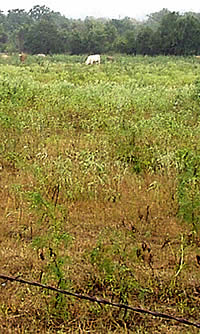 In Williamson v. Commission 974 F.2d 1525 (9th Cir. 1992), the 9th Circuit Court of Appeals held that the special use valuation provision did not apply to the Williamson family farm (
In Williamson v. Commission 974 F.2d 1525 (9th Cir. 1992), the 9th Circuit Court of Appeals held that the special use valuation provision did not apply to the Williamson family farm ( In 1976, Congress created an exception to estate tax rules -- special use valuation -- to enable family farmers to pass their farms from one generation to the next. Prior to 1976, heirs who inherited family farms were often forced to sell the family farms in order to pay high estate taxes. Family farms were (and are) often worth a lot of money because farmland, the main farm asset, is worth a lot of money. For family farms worth more than $600,000, heirs were required to pay between 37% and 55% of the farm’s fair market value in estate taxes. The modest incomes generated by family farms were often insufficient to pay these high estate taxes.
In 1976, Congress created an exception to estate tax rules -- special use valuation -- to enable family farmers to pass their farms from one generation to the next. Prior to 1976, heirs who inherited family farms were often forced to sell the family farms in order to pay high estate taxes. Family farms were (and are) often worth a lot of money because farmland, the main farm asset, is worth a lot of money. For family farms worth more than $600,000, heirs were required to pay between 37% and 55% of the farm’s fair market value in estate taxes. The modest incomes generated by family farms were often insufficient to pay these high estate taxes. State corporate farming laws are ineffective at preventing absentee landownership and tenant farming. Farmers support permitting absentee landownership and tenant farming in at least some circumstances. Farmers want the freedom to pass on interests in farmland to their off-farm heirs when they die. Off-farm heirs who inherit farmland become absentee landowners. In addition, farmers want to be able to retire, continue to live on their farm, and rent their farmland to someone who lives off-farm (a “tenant farmer”) as a source of retirement income. To accommodate farmers’ interests, while corporate farm laws restrict absentee landownership by many corporations, they do not restrict absentee landownership by individuals, “family farm corporations,” or “authorized farm corporations.” Despite the goal of environmental interest groups to restrict absentee landownership, there has been a steady increase in absentee landownership and corporate farming laws have done little to counter this trend.
State corporate farming laws are ineffective at preventing absentee landownership and tenant farming. Farmers support permitting absentee landownership and tenant farming in at least some circumstances. Farmers want the freedom to pass on interests in farmland to their off-farm heirs when they die. Off-farm heirs who inherit farmland become absentee landowners. In addition, farmers want to be able to retire, continue to live on their farm, and rent their farmland to someone who lives off-farm (a “tenant farmer”) as a source of retirement income. To accommodate farmers’ interests, while corporate farm laws restrict absentee landownership by many corporations, they do not restrict absentee landownership by individuals, “family farm corporations,” or “authorized farm corporations.” Despite the goal of environmental interest groups to restrict absentee landownership, there has been a steady increase in absentee landownership and corporate farming laws have done little to counter this trend.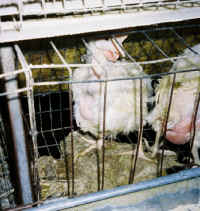 State corporate farming laws do prevent direct competition from packers and processors in some agricultural sectors. However, interest groups representing the poultry, hog, and beef packing and processing industries have convinced state legislatures to adopt numerous corporate farming law exemptions. Nearly all corporate farming laws permit corporations to engage in poultry production. In addition, Oklahoma’s corporate farming law permits corporations to engage in hog production and dairy production. Okla. Stat. tit. 18, sec. 951 et al. Kansas’s corporate farming law permits corporations to engage in hog and dairy production, if counties vote in favor of these exemptions. Kan. Stat. Ann. sec. 17-5903 et al. Minnesota’s corporate farming laws permits corporations to engage in hog and beef cattle production, if 80% of the corporation’s revenue comes from agricultural production. Minn. Stat. sec. 500.24 et al. Corporate farming laws have been effective at preventing direct competition from packers and processors, but only in non-exempt sectors.
State corporate farming laws do prevent direct competition from packers and processors in some agricultural sectors. However, interest groups representing the poultry, hog, and beef packing and processing industries have convinced state legislatures to adopt numerous corporate farming law exemptions. Nearly all corporate farming laws permit corporations to engage in poultry production. In addition, Oklahoma’s corporate farming law permits corporations to engage in hog production and dairy production. Okla. Stat. tit. 18, sec. 951 et al. Kansas’s corporate farming law permits corporations to engage in hog and dairy production, if counties vote in favor of these exemptions. Kan. Stat. Ann. sec. 17-5903 et al. Minnesota’s corporate farming laws permits corporations to engage in hog and beef cattle production, if 80% of the corporation’s revenue comes from agricultural production. Minn. Stat. sec. 500.24 et al. Corporate farming laws have been effective at preventing direct competition from packers and processors, but only in non-exempt sectors.

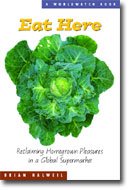

 Previously, I posed the following question:
Previously, I posed the following question:  Agricultural prices are relatively unstable in comparison to the prices of other goods. This instability is caused by several factors: crop yields fluctuate wildly in response to climate conditions, demand for agricultural products is inelastic, supply of agricultural products is inelastic, and globalization has led to agricultural prices fluctuating in response to global economic recessions, droughts in Brazil, and other tumultuous events. Market instability causes hardship for farmers and arguably reduces investment in new technology below economically efficient levels. Economic downturns cause farmers to go out of business. While economists would generally argue that society as a whole benefits when farmers go out of business in response to lower agricultural prices, this assumes that there are no barriers to entering the market. In fact, it is very expensive for new farmers to enter the market. Farmers are not able to reenter the market during economic upswings.
Agricultural prices are relatively unstable in comparison to the prices of other goods. This instability is caused by several factors: crop yields fluctuate wildly in response to climate conditions, demand for agricultural products is inelastic, supply of agricultural products is inelastic, and globalization has led to agricultural prices fluctuating in response to global economic recessions, droughts in Brazil, and other tumultuous events. Market instability causes hardship for farmers and arguably reduces investment in new technology below economically efficient levels. Economic downturns cause farmers to go out of business. While economists would generally argue that society as a whole benefits when farmers go out of business in response to lower agricultural prices, this assumes that there are no barriers to entering the market. In fact, it is very expensive for new farmers to enter the market. Farmers are not able to reenter the market during economic upswings. Looking for a new seminar? Or perhaps just some ways to jazz up your current constitutional law class? Even if you seek nothing more than a little humor and stimulation as you exercise your 21st amendment rights, you needn't look further than the
Looking for a new seminar? Or perhaps just some ways to jazz up your current constitutional law class? Even if you seek nothing more than a little humor and stimulation as you exercise your 21st amendment rights, you needn't look further than the 


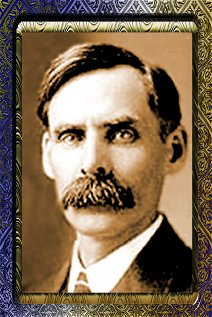


 Second, NBMA members managed both the production and processing phases of producing broiler chickens for market. It was unclear whether the agricultural exemption applied only to persons solely engaged in agricultural production or whether the exemption also applied to persons engaged in both agricultural production and processing.
Second, NBMA members managed both the production and processing phases of producing broiler chickens for market. It was unclear whether the agricultural exemption applied only to persons solely engaged in agricultural production or whether the exemption also applied to persons engaged in both agricultural production and processing. In contrast, the National Broiler dissent engaged in dynamic interpretation, focusing on what seemed fair and workable in 1978 and was consistent with the statute’s purpose. The National Broiler dissent emphasized that the agricultural industry had changed substantially since the 1920s and asserted that the agricultural exemption should be interpreted in light of the changed economy. Specifically, the dissent noted that by 1978 processors were in a weak economic position in relation to economically powerful buyers (large retail chains and institutional food outlets).
In contrast, the National Broiler dissent engaged in dynamic interpretation, focusing on what seemed fair and workable in 1978 and was consistent with the statute’s purpose. The National Broiler dissent emphasized that the agricultural industry had changed substantially since the 1920s and asserted that the agricultural exemption should be interpreted in light of the changed economy. Specifically, the dissent noted that by 1978 processors were in a weak economic position in relation to economically powerful buyers (large retail chains and institutional food outlets). Prior to
Prior to 














